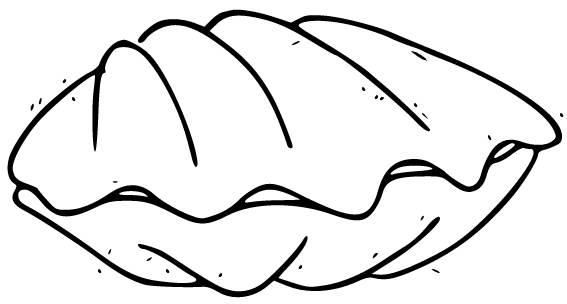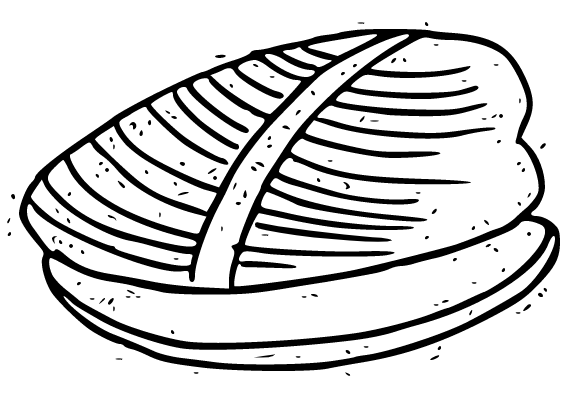-

-
The Discerning Mollusk's Guide to Arts & Ideas
-


Newborn
Agustín Maes
Whiskey Tit, 2020
his excellent novella begins with a jolt: two boys find the abandoned corpse of an infant in a creek. What follows is a wide-ranging exploration of character, place and even time itself. Using multiple points of view, from bewildered participants to an omniscient narrator, Newborn tells a big story in a small space.
Set mainly in 1980, it centers on a teenager called Bitsy. She’s the mother of the child, a heartbreaking mix of naïve, plucky and tragic. Other characters—the child’s father, Art; Donny and Aaron, the boys who find the corpse; and various minor players—are also rendered with precision, and their ignorance of Bitsy’s plight in their midst adds layers of complexity.
Maes takes a bold stroke in juxtaposing these human events with descriptions of larger changes in the local reservoir and creek related to the passage of time. Regarding the creek, the omniscient narrator remarks: “By that gentle sound it tells of its beauty and terribleness, its ceaselessness, of how it is inhabited by forms whose forms are fashioned from that habitation.”
Nature in this larger sense has its own rhythms, indifferent to human woes and the perplexities of human nature. The omniscient narrator makes proleptic allusions to what characters didn’t or couldn’t know. In less able hands, this could come off as tricksy or portentous. Or worse, minimizing human pain since hey, we amount to nothing in the Big Picture.
But Maes is more subtle, and the characters’ situation gains poignancy for the very fact that it is so ephemeral and much of the suffering is perhaps avoidable. His prose sometimes uses biblical cadences, or suggests the anagogical:
The child began to move: slow and sluggish, its tiny blue fists quaking uselessly at its sides, stick legs pedaling feebly at the air as though in a leaden jog through the landscape of some dream or nightmare.
The girl released her breath. “Oh my God.”
There are echoes of Cormac McCarthy here, but Maes allows his characters more interiority and, to my taste, it makes them more sympathetic. He depicts a very harsh world but without an inexorable naturalism that feels obliged to grind them into the dirt. There are also moments of tenderness and goodness. Newborn is highly stylized, powerful fiction.
Shoot the Horses First
Leah Angstman
Kernpunkt, 2023
The title page of this collection of short fiction announces its contents not as stories but as “histories.” Most of the sixteen narratives are set in the 19th century, some take place even earlier, and the volume includes historical notes and a glossary of Wôpanâak terms. That said, however you want to label them, these texts operate solidly within the conventions literary realism. At their best, they bring to life characters and events that in other accounts are reduced to the dry status of “information” or simply overlooked.
In “The Orphan Train,” a Brooklyn boy named Arthur is tossed on a train taking him west, after being told to told “take the train or take the chain.” This was one of the era’s solutions to the problem of homelessness. “The sweepings of New York’s streets would become rural America’s problem now.” His situation is dire, but Angstman avoids determinism and even allows for a glimmer of hope.
Although these histories contain plague, murder, war veterans with post-traumatic stress, improvised amputations—these are not genteel versions of the past—Shoot the Horses First doesn’t depend on a miserabilist default setting. The relative lawlessness of frontier becomes an opportunity in “In Name Only,” where a desperate and disempowered woman and a homosexual rancher can come to a mutually beneficial understanding. Similarly, “A Lifetime of Fishes” rewrites a woman’s captivity narrative.
The question of presentism is inescapable in this kind of writing, and it would be unfair to expect Angstman somehow to “solve” it. For better or worse, we cannot escape the perspectives of our era. But the in-the-moment appeal of watching a well-told story unfold is its own reward.
And some of the shorter pieces—“flash histories” in effect—largely avoid the question. “One Night, When the Breath of August Blew Hotter,” is a fleeting anecdote of burying a murdered victim. It is strong on imagery but doesn’t bother to explain questions of when and why. It is effectively unsettling. Or, in “In the Blood,” a quack doctor experiments with transfusing dog blood into humans. (Why not give it a try and see what happens?) In this example, too, brevity without context gives the story added punch.
Wide-ranging and ambitious, Shoot the Horses First testifies to the driving force of fiction: curiosity.
She Calls Me Cinnamon
Lane Chasek
Pski’s Porch, 2023
In this funny first novel, a young man named Cliff finds himself transformed into a cocker spaniel puppy. Echoes of Gregor Samsa, to be sure, but with a twist: he is convinced that his predicament is because his former human self was murdered, and his new canine identity is a reincarnation. He knows neither the exact cause of his death nor the culprit. So he sets out, like a bewildered four-legged detective, to solve the mystery.
Cliff lives in the care of his ex-girlfriend Phoebe, who calls him Cinnamon. He can still understand human speech but he cannot talk back, and he worries that he is forgetting his human past. He also manages to communicate with other creatures with varying degrees of success. One of them, a pug, turns out to be Father Dvorak, his former priest, who seems rather contented in his new life. Nowadays he’s a “fat puddle” more interested in lying in the sun and sleeping than in talking about metempsychosis. Cliff is also pestered by a nitwit raven. Adjusting to this situation is a challenge.
I have no ability to object or consent to anything, I’m powerless, and the best I can hope for in this new life is getting petted and coddled (which is sometimes nice, but not nice enough).
The book is structured around reminiscences of his past life, in which Cliff worked at a Shell station which he was proud of keeping very clean. His supervisor Oshun is full of opinions about mythology and superheroes and critical exegesis of Fat Albert and the Cosby Kids. In another set piece, he offers a probing stylistic analysis of the comic strip Dilbert. Cliff also recounts his relationship with his autistic sister, Margaret, and sexual shenanigans of his terminally ill mother. Pedophilic predators also figure in the mix. These anecdotes are often darkly amusing but Chasek doesn’t settle for the merely whimsical, as there is real pain here.
The ending left me somewhat perplexed by a shift in tone but on the whole, She Calls Me Cinnamon is much more than a shaggy dog story. Original and intriguing, the novel mixes elements of the fantastic with acerbic social commentary and an irreverent wit.

Charles Holdefer lives in Brussels. His latest novel is Don’t Look at Me (Sagging Meniscus, 2022).